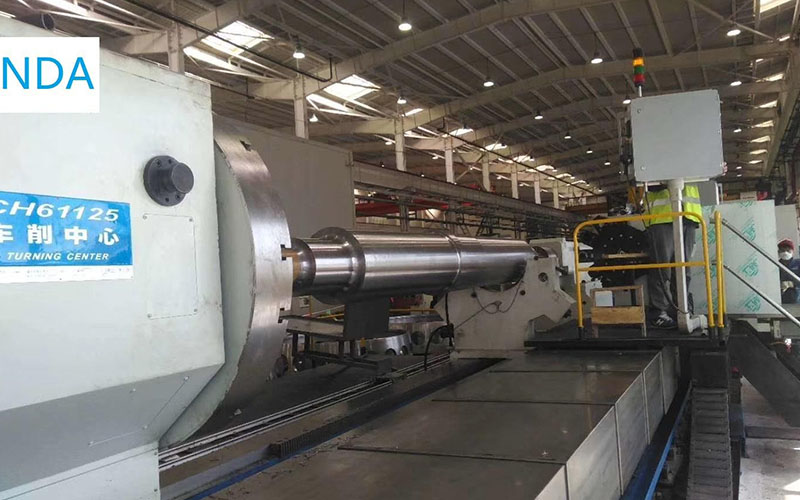Industry News
Roller Requirements for Roll Performance and Transformation
Author : Hani Time : 2020/04/01
The components of the bar rolling machine are rough rolling, intermediate rolling, and finishing rolling. The finishing rolling unit mainly shrinks the steel slab at a high temperature. The rolling force is large and the rolling speed is low. Generally, the roller is required to consider the strength of the roller and the hot crack resistance. At the same time, certain abrasion resistance is required. The ordinary cast steel series used earlier in China, due to the low hardness of the roll body (about 35 ~ 40HS) and poor wear resistance, have not been adopted in modern continuous and automated bar production lines. Ordinary cold-hard cast iron rolls have better wear resistance than cast steel rolls. The hardness of the roll body is 52 ~ 60HS. The content of main alloy elements Cr, Ni, Mo is low, the tensile strength and wear resistance of the roll are low. The surface has a large hardness gradient inward (large drop). In actual production, the new rolls are wear-resistant, and the old rolls have significantly reduced wear-resistance after use.
The bar rolling mill is mainly responsible for the tasks of extending the rolling stock and providing accurate shapes for the finishing rolling mill. The rolling force is moderate, but the rolling speed is significantly higher than that of the rough rolling mill. It requires the mill rolls to have higher wear resistance, Thermal conductivity and resistance to cold and hot fatigue. Most manufacturers use medium-nickel-chromium-molybdenum infinite cold-hard cast iron rods. The production process uses centrifugal casting + stress relief annealing. The main alloy composition is 0.30% ~ 1.200% Cr, 1.01% ~ 2.00% Ni, 0.20% ~ 0.60% Mo; the structure is fine pearlite + 25 ~ 35% carbide + flake graphite. The hardness of the roll body is 62 ~ 75HS. The medium-nickel-chromium-molybdenum infinite cold hard cast iron roll has a higher Cr content, a higher carbide content, and a lower toughness.
There are many types of rolled products in the bar finishing mill, with complex hole shapes, uneven deformation distribution, high rolling speed, and large changes in rolling force. Therefore, the rolls are required to have excellent abrasion resistance and anti-stripping performance, and have certain properties. Thermal fatigue resistance to increase the amount of steel passing through a single groove of the finished roll and reduce product size fluctuations. The rollers are selected from nodular cast iron rolls, high alloy infinite cold hardened cast iron rolls, high-speed steel composite rolls, and tungsten carbide composite rolls with the best wear resistance. For extended section of simple cross section, high alloy infinite cold hard cast iron rolls are generally selected. For round holes or ribbed steel bar finished product holes, high-speed rigid composite rolls or tungsten carbide composite rolls with good wear resistance can be selected. For round steel product holes, because of the small amount of repair each time, from the perspective of increasing the output of a single groove and reducing the number of groove changes, a tungsten carbide composite roll with the best wear resistance can be selected, or a high-speed steel composite roll can be used. Due to the existence of transverse ribs, the ribbed steel product holes need to be turned off during heavy processing. The use of tungsten carbide composite rolls is too expensive, so high-speed steel composite rolls are generally used.

TAG: bar rolling mill roller finishing rolling finishing rolling mill rough rolling mill rolls


